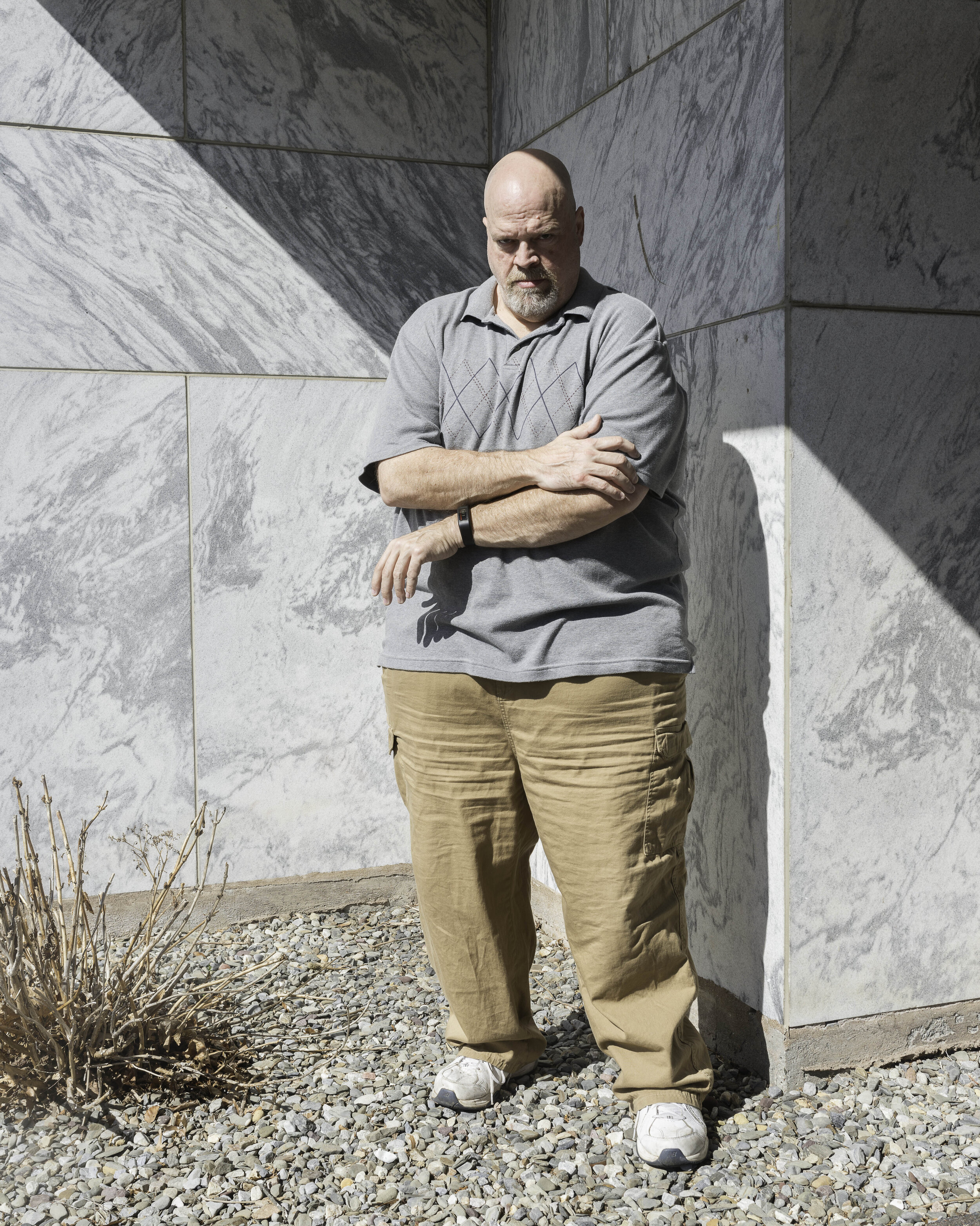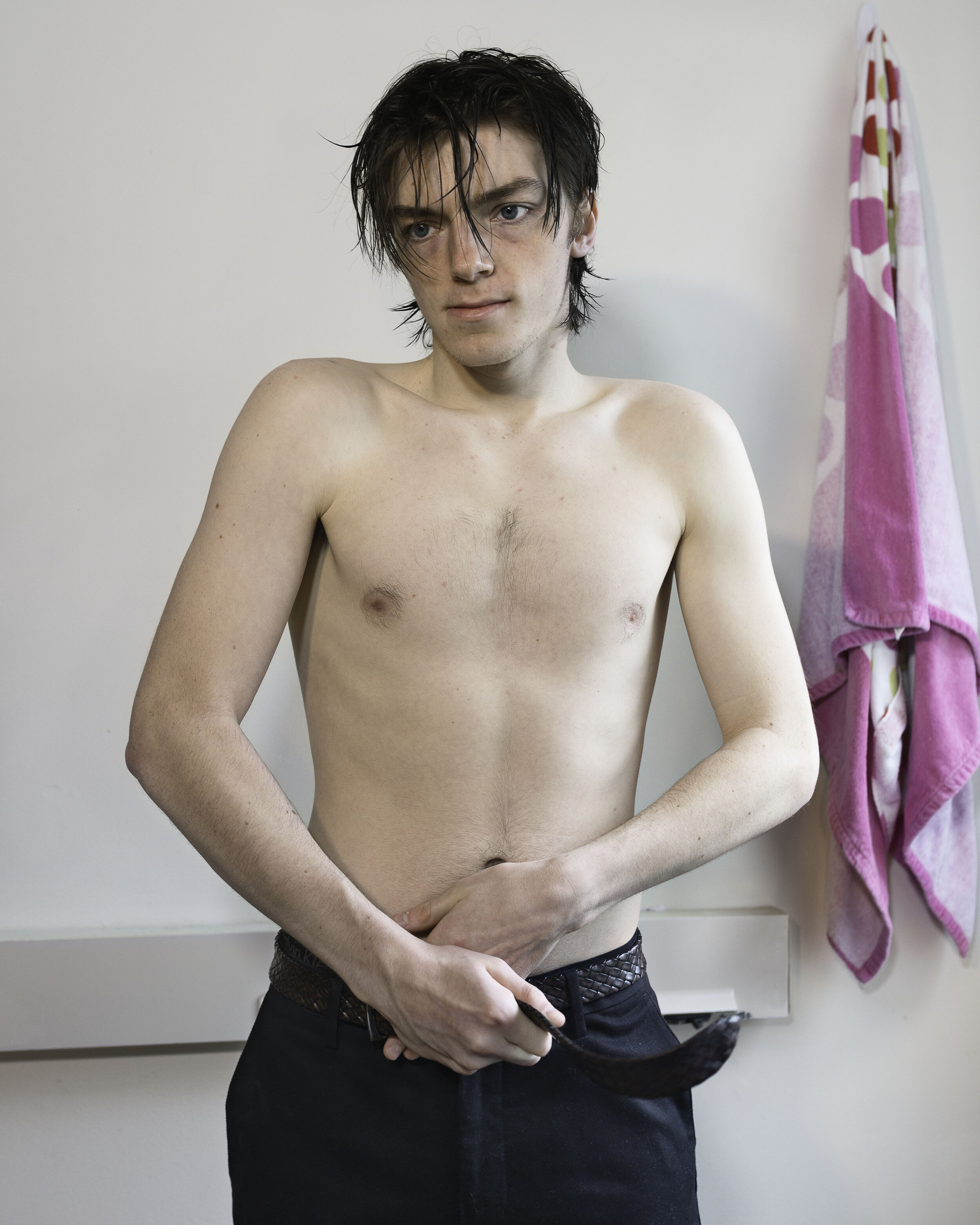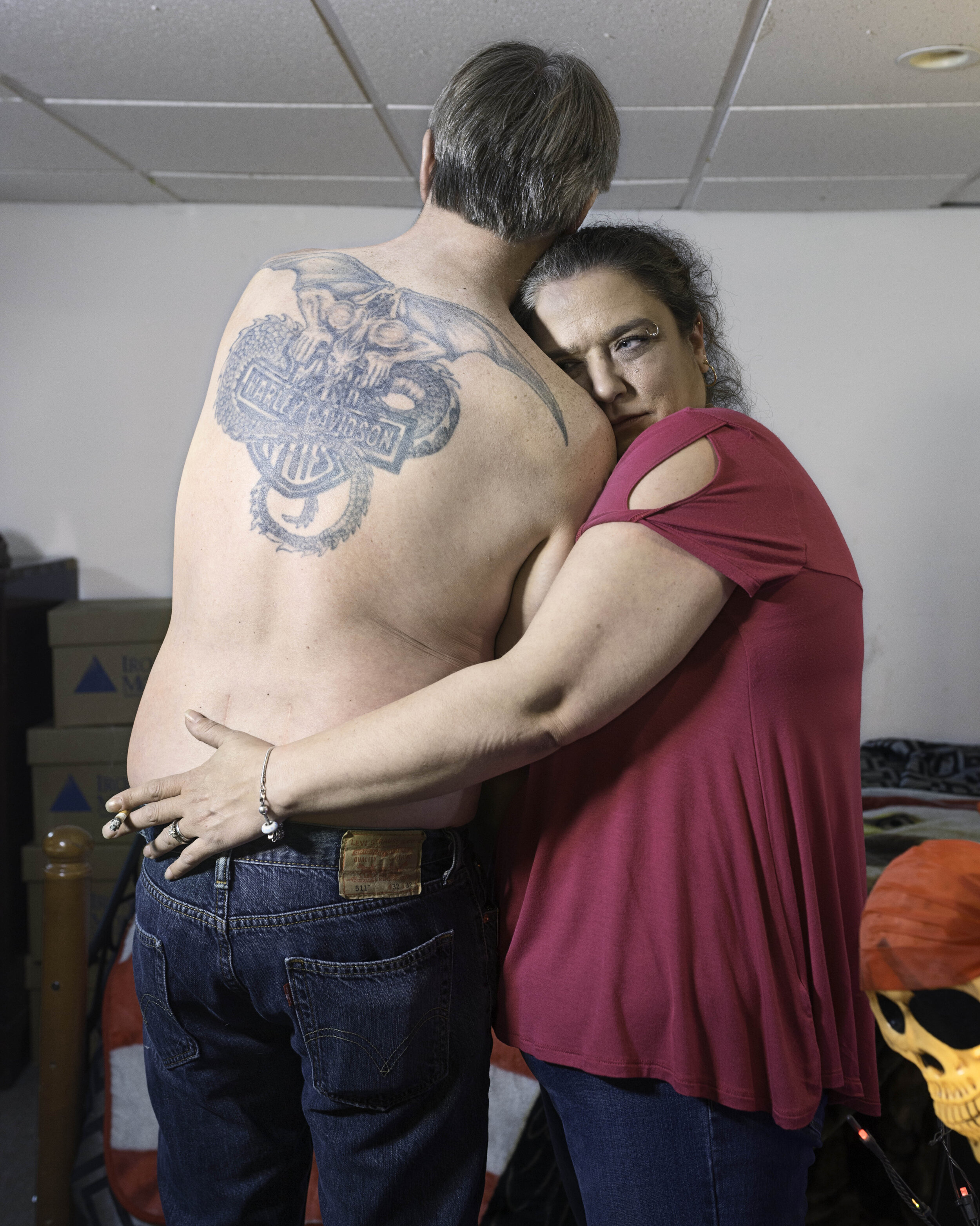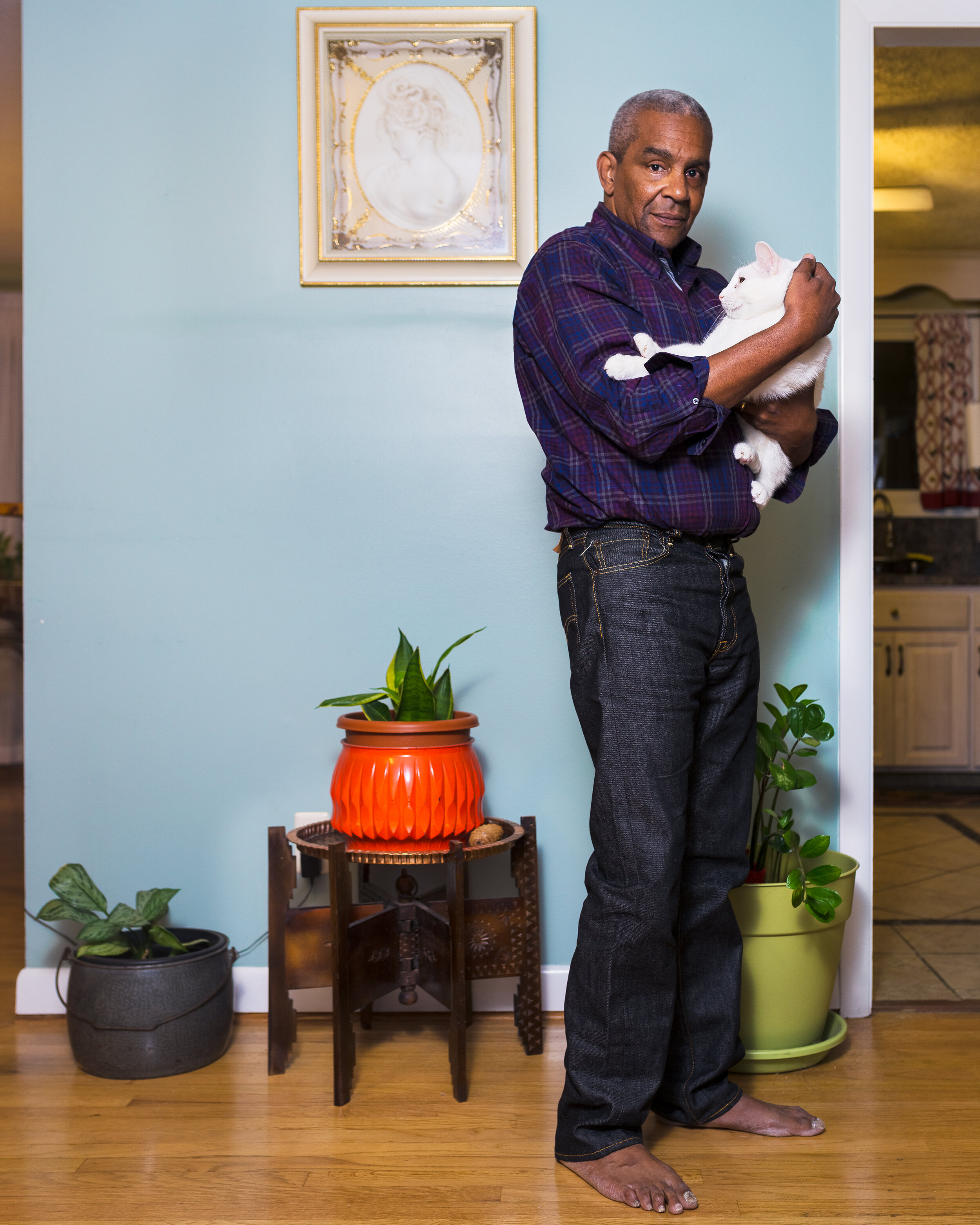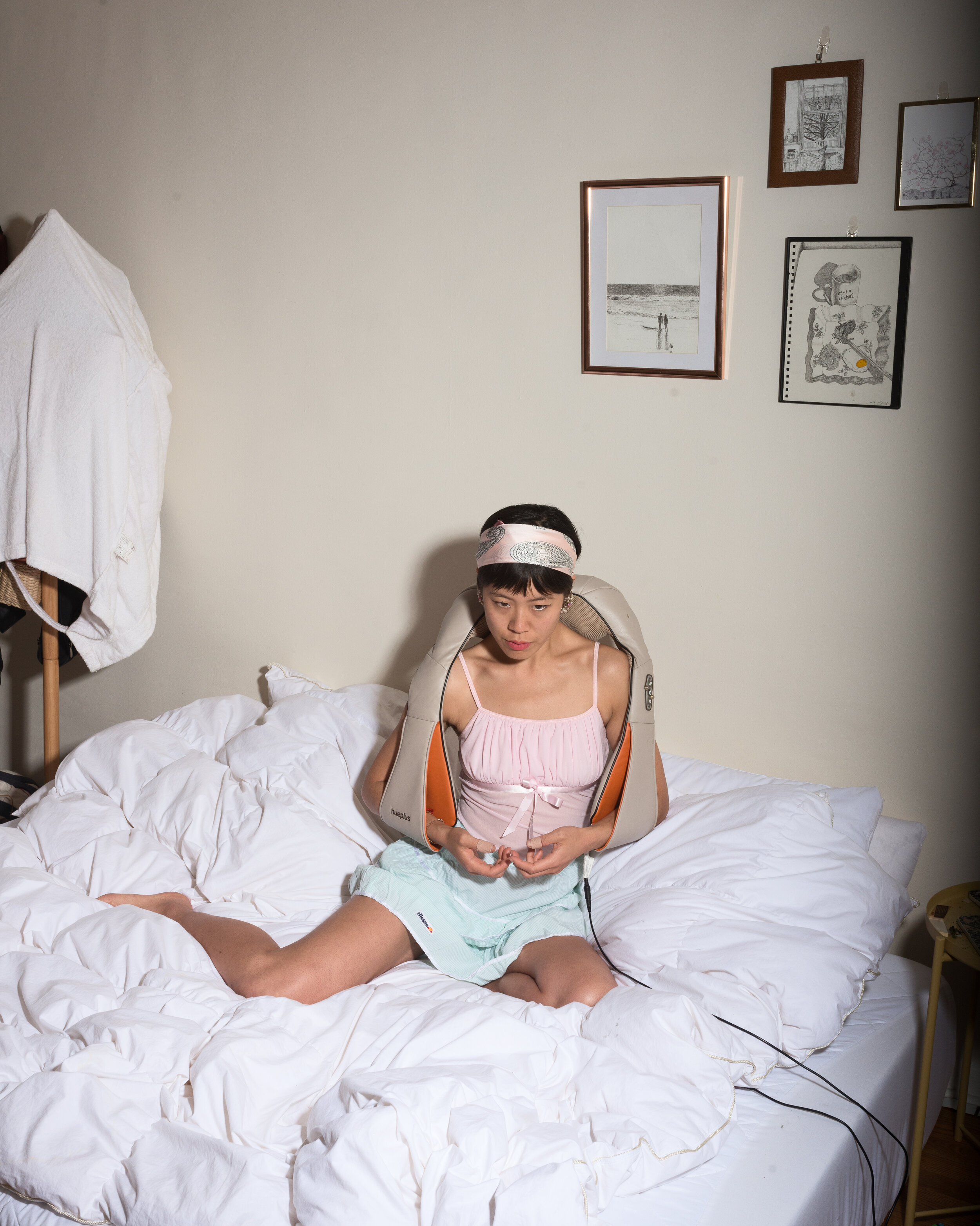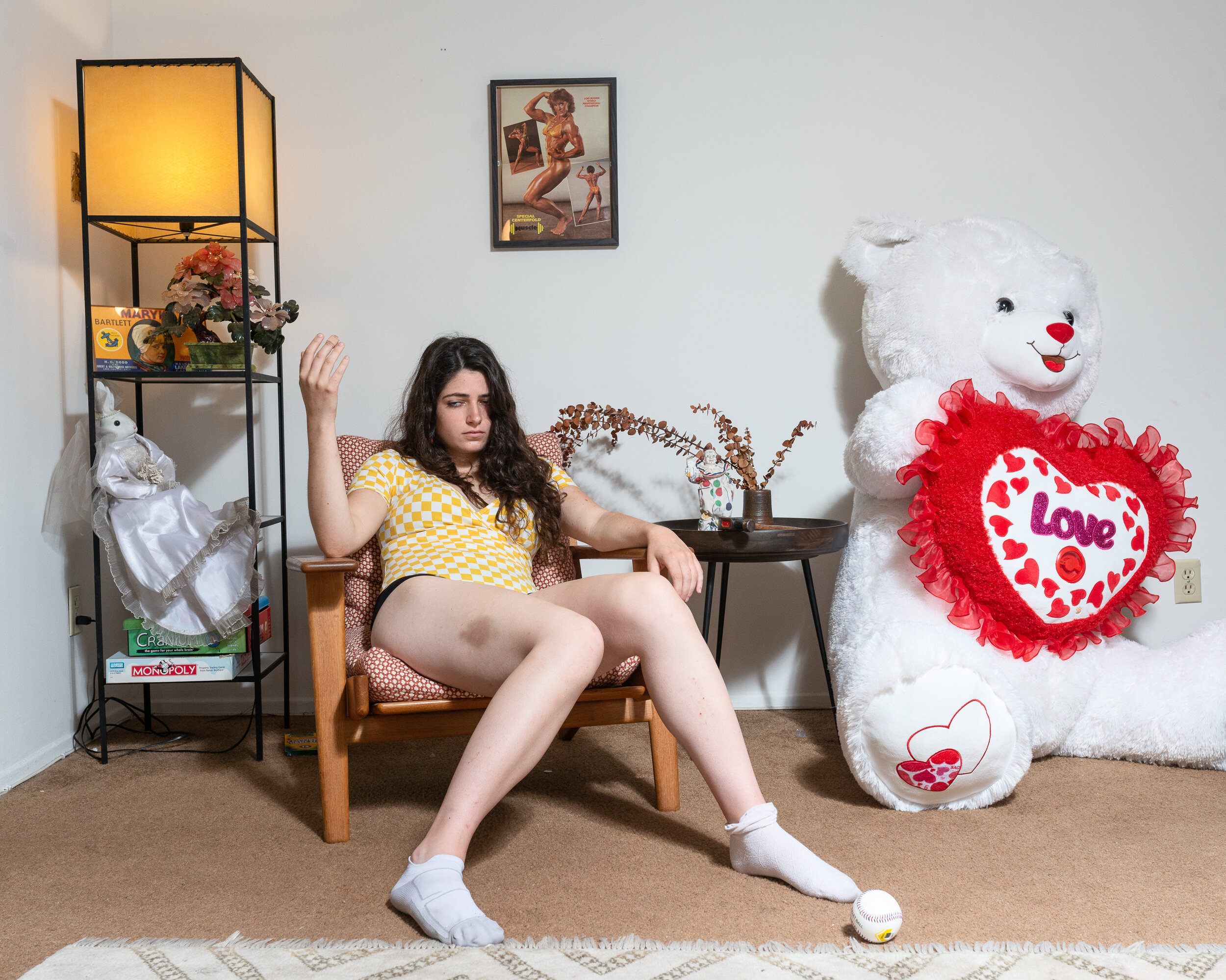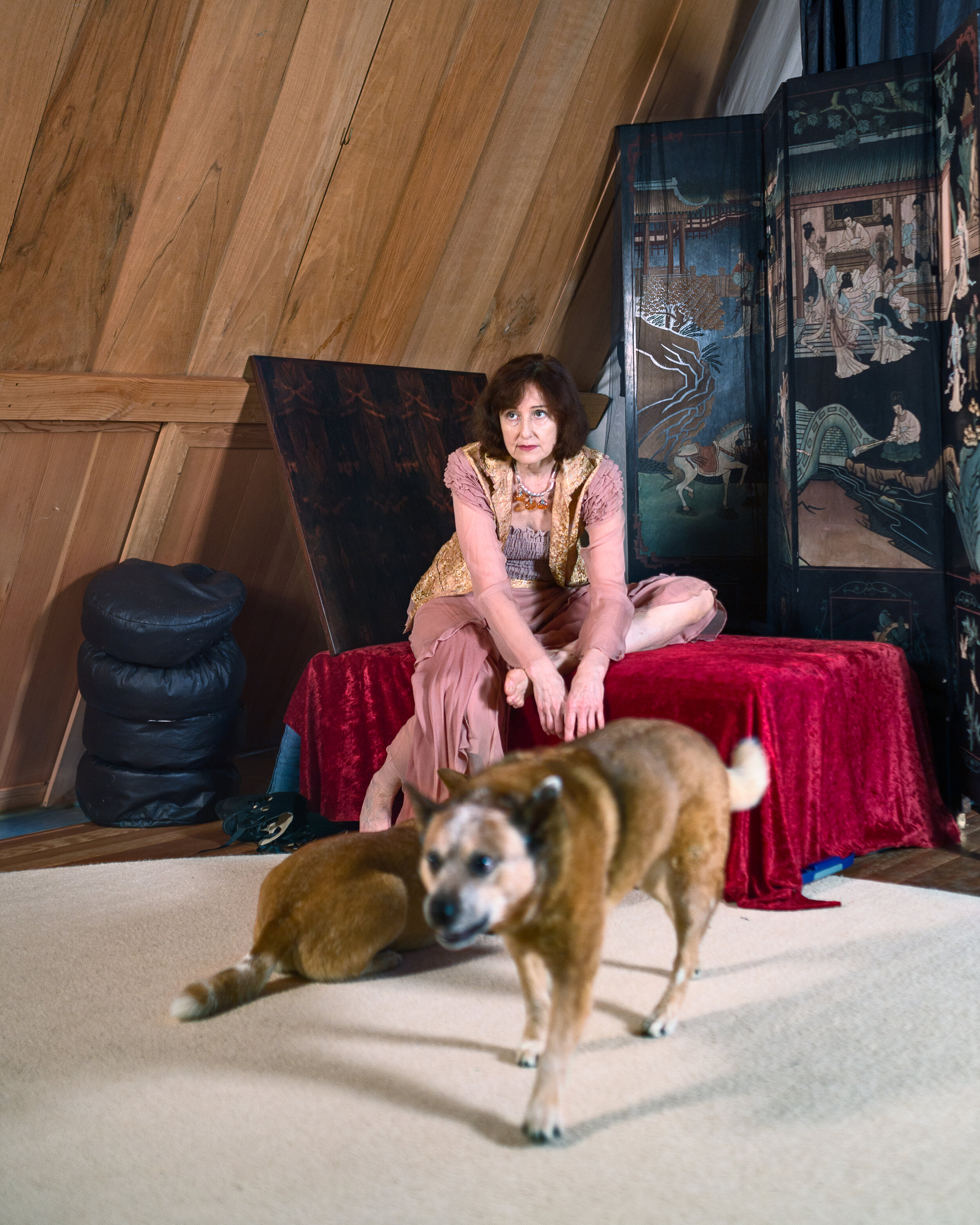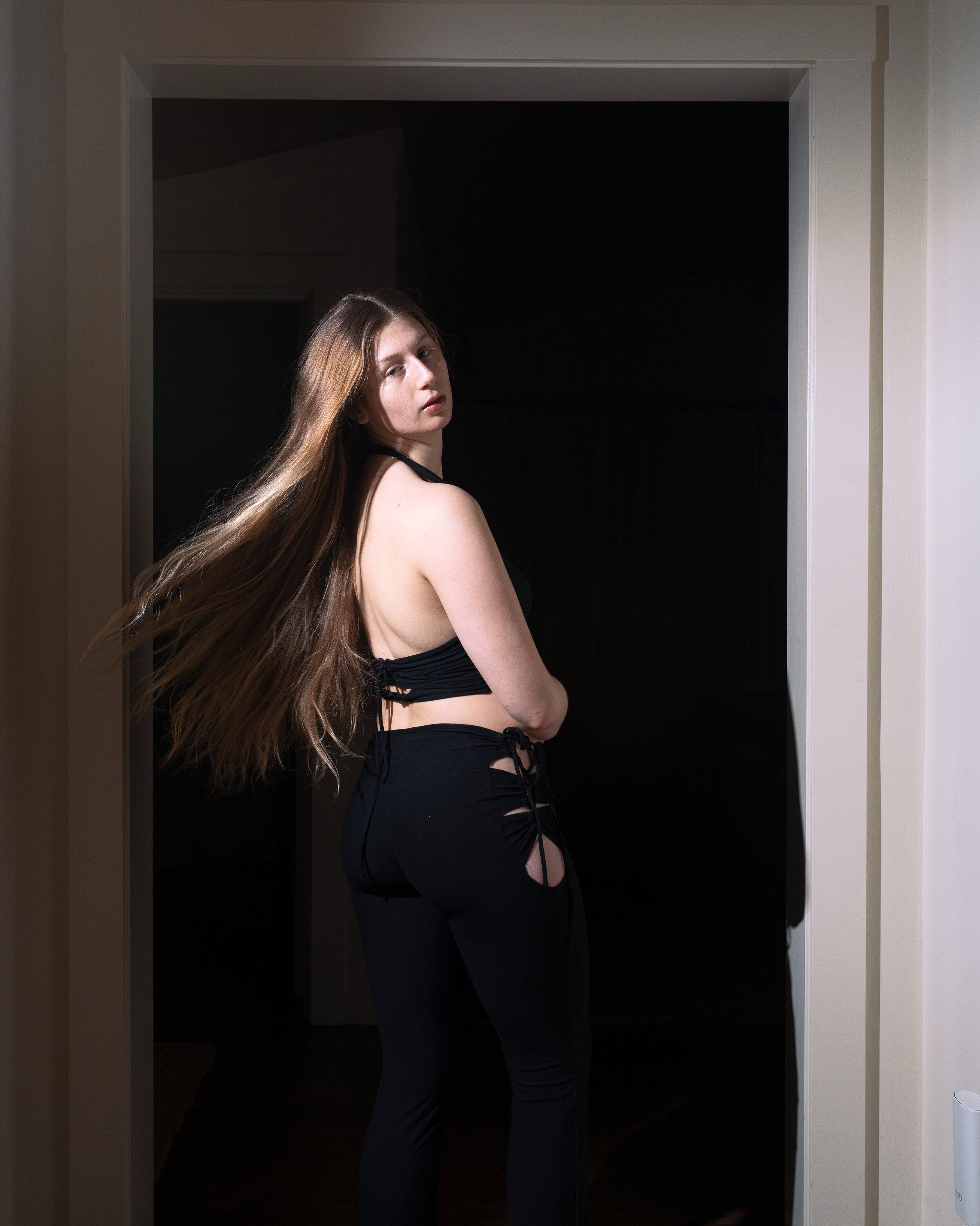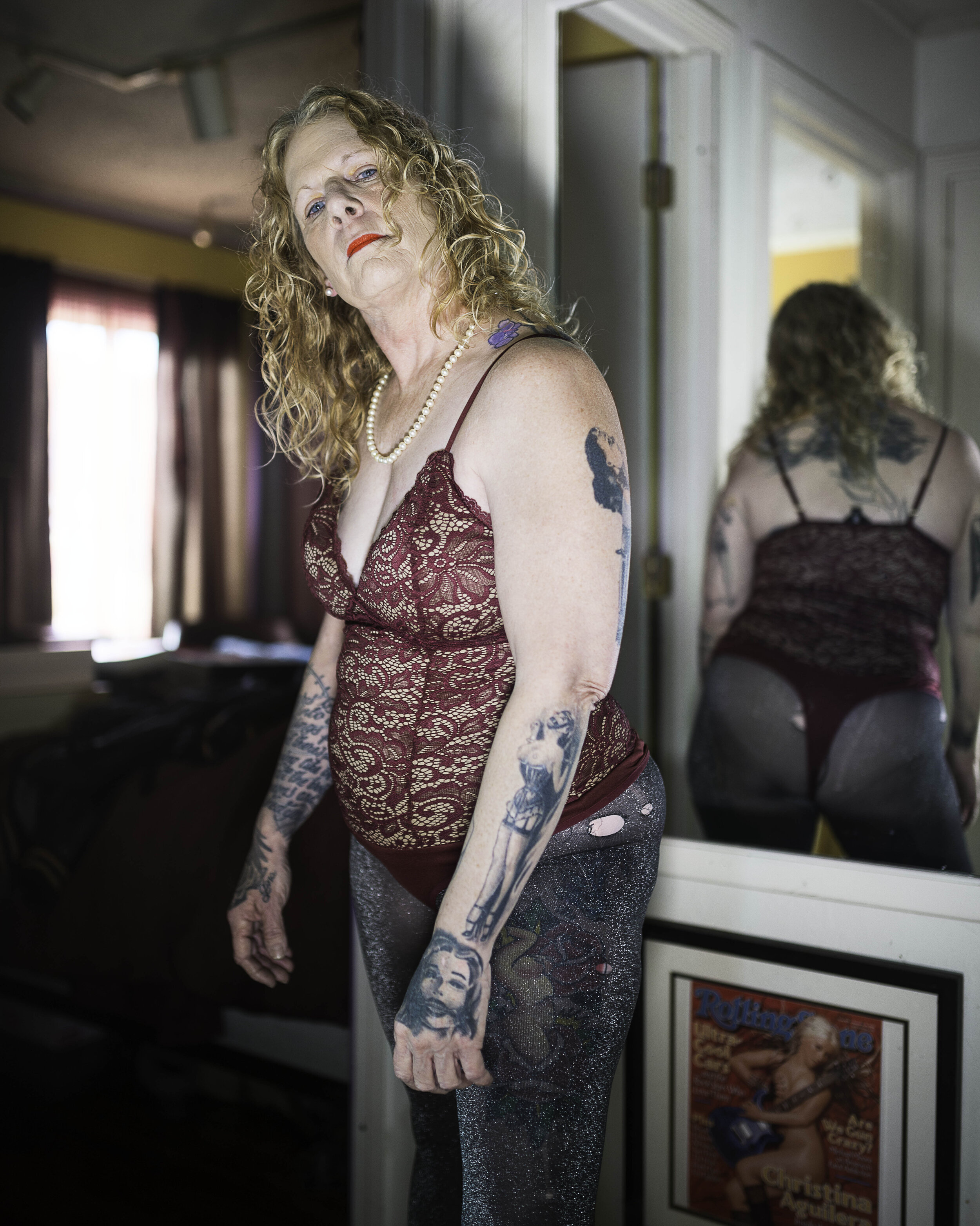Emily Monforte
Emily can you begin by introducing yourself, how did you interest in photography begin?
Hi! My name is Emily Monforte, I'm 24 years old (25 in a matter of days though!). I'm a queer photographer born and raised in Berkeley, CA, but I now live and make work in Los Angeles. My interest in photography began when my uncle gifted me my very first 35mm Nikon EM film camera. Up until that point, I had mostly thought of photography as an archival tool that for certain people just sometimes turned out beautiful.
I remember the first photograph I took that felt close to art was of a woman in a butterfly exhibit, gripping her baby. The mother's eyes looked off, despondent and tired, while oppositely, the baby’s gaze was directed straight into my lens with a gravity that felt startlingly adult. That was my first time photographing a stranger, and the first time I created something that evoked unanswered questions (which to this day is my favorite kind of photography).
Can you share what inspires your portraits, I believe I read somewhere that they are characters that you imagine. What influences and inspires these characters?
My original inspiration to make the portraits I make now came from evening walks in my neighborhood in Berkeley as a tween. In Berkeley, all the houses are full of mystery. They’re 100 years old, smattered with charming oddly shaped windows, they are filled with dark corners, spider webs and clutter that spills into front yards. My imagination always hoped that the character of each house (like dogs and their owners) would match that of their occupants. And so, when I set out to start my thesis at Wesleyan (which I started at home the summer before my senior year), I put hand written letters in the mailboxes of the homes that always enticed me. And in those letters I asked to photograph the people inside.
To my surprise, almost every letter I put out was answered with a “Yes!” But only a third of the shoots I did turned out to be as magical as I’d hoped (both home and the subject). And thus, it seemed more efficient to flip my scouting process on its head. I find it’s easier to read the potential eccentricities of a person from a distance (which is more likely to also be reflected in their interiors), than it is to guess the eccentricities of the interior of a home and the person living inside of it, just based on a house’s exterior.
Does people watching play a role in your process of creating these characters?
One day I was at the grocery store in Middletown, CT (where my college is), and I noticed an incredible woman in her 50s. She was strolling through the aisles, diamond rings abound, bleached blonde hair, pink long nails and a pink velour tracksuit to match. It hadn’t occurred to me that the grocery store could be the perfect place for people watching, but after I approached her and she agreed to be photographed in her home at a later date, I was hooked.
The grocery store is an incredible place to scout real people. Everyone has to buy food, they are tethered to their carts (so they can’t jump ship when you approach them), and no one expects to be approached. Upon scouting people in this new way, I found that I would immediately begin to fantasize about my subjects' life (home, wardrobe, lifestyle) before even exchanging words with them. My fantasies were able to grow in detail as I had days, sometimes weeks, between scouting and shooting. Once in their home, I found myself naturally working to recreate what I had fantasized, in that I would move items around in their home as if they were props, dress them, and direct them in bodily positioning and facial expression to create the version of themselves I’d envisioned them to be. For this reason, my images began to feel character like. They aren’t based in any true reality, they exist in a space between my imagination, and who the person really is.
Hence, the name of the series is Near Convergence. Due to the partial article of each life capture, I believe there is a distance felt by my viewers, from the humanity of each person. There is a feeling that you may nearly know the people photographed, but a degree of separation lies between you and them, forcibly inserted by me, making it impossible to know them completely. Yet, the goal of these portraits is not for you to know who they are, rather it is about the rare and odd pleasure of composing a fantasy of the life I believe my subjects to live.
How did you edit this body of work?
In terms of editing the project, I definitely got help in culling down this series from my thesis advisor and friends, as I did hundreds of shoots for it over the course of a year and a half. But, many of my early shoots weren’t even usable. I had moved too quickly during the shoot, or I hadn’t yet had access to the strobe lighting I began to use midway through the project. It took a long time for my style and process to even out and become calm and methodical. But ultimately, the photographs that didn’t make it into the series just lacked mystery and eye candy. I wanted every image to feel like a stand alone, for there to be so many things going on in each that you would be satisfied just looking at one for a long time.
What role does providing direction play when recreating these fantasies of the life you might have imagined someone to have? How do you make your subjects feel at ease?
When making a portrait with someone, I have a pretty heavy hand in the way everything looks. I will move anything out of the frame that doesn’t serve my fantasy (and move anything into the frame that does- which often means I look around their entire house and take small items with me to the spot where I’ll take their picture). I will dress my subject by going into their closet with them and picking out their outfit and accessories. And when it comes to finally taking the picture with them, I often start by having someone sit or stand in a neutral position, no facial expression at all, I’ll take a few initial photographs, adjust my light to enhance the parts of the scene or body that I want to be enhanced, and once we’ve settled in I will slowly begin to ask my model to adjust their body and face. That may sound like: “Can you drop your chin, can you look over your eyelids, can you give me a petulant teenage-like bored/angry stare, can you lift your shoulder a little while your hand lingers in the air and lift your eyes to the place my fingers are pointing.” It’s incredibly precise, and I’ll continue to push it until I feel I’ve created a bodily position that feels unusual and unexpected, but not forced (more like an in-between moment). I’m very good at giving words of affirmation, I love to tell my subjects how beautiful the image is looking, or how close we are to something beautiful. I think because the progression is subtle and slow, I’ve never had anyone mention discomfort whatsoever. In fact, almost every photo subject I’ve shot has told me they’ve had a fantastic time working with me, which always warms my heart so much.
Do you keep a journal of some sort that helps you take note of how to improve for the next scheduled shoot?
I actually do almost no writing about my images. I generally tend to stay away from conceptualizing or intellectualizing what my images mean, although I understand that it’s frequently necessary (like now!). In fact, I’m actually dyslexic, so I find writing about my work to be a pretty unnatural process that frequently makes me feel like I'm reducing my work to something much smaller and simpler than it is. Truth be told, I rarely know what my images mean or what they’re about! If anything, I’m better at and get more out of reflecting on the process rather than the final product.
As of late my images have felt darker, they have more movement in them, and the crop has started to get closer (which is very different from this series). I have no idea what it means, and have yet to see a strong conceptual theme come about that makes my new work feel like a series as much as Near Convergence does. But I see growth, and that growth ultimately comes from shooting 3/4 times a week, sometimes buying new tools, but mostly just habit, new people, and pushing myself and my subjects to try something a little bit more experimental each time.
I love that you put letters in people's mailboxes and approach people in market, have you ever been nervous to approach someone or is it in your character to feel comfortable doing so? What advice might you have for someone who is nervous to approach someone they'd like to photograph and collaborate with
I have major major anxiety about approaching people, it takes a lot of guts and emotional labor to work with as many strangers as I have. This past year was a nice break from that practice, and I’ve been easing back into it. Right now it looks like me approaching people on the internet rather than in real life. I honestly lose a little steam every time I get rejected or ghosted by a subject and I’ve started to make work that is kinder to myself in that regard. I let myself now take pictures of people I know, or am acquainted with, or people who I can access through sites like Nextdoor or Craigslist. I’m not exactly sure how sustainable it is, and most likely will have to go back to mustering up the courage to go back to the grocery store or some version of that. But, for now, I’ve been ok with my new method. And for those looking to do the same, I think the most comforting thing I can offer is that your anxiety is extremely legitimate, it’s not easy, even if I made it look easy, trust me it wasn’t, and whenever you feel burnt out, please, take a break and make work in a different way. You never know, it might lead to your next project.
To keep up to date with Emily’s work follow along here:
Website
Instagram


